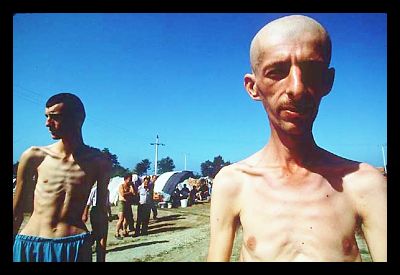World Briefing: Bosnia 101

The Bosnian war took place on the other side of the world, but was so profound in horror and destruction that we in the West still speak of it today.
The Bosnian war started in what was formerly Yugoslavia, when ethnic divisions came to a boil. There were 3 main ethnic groups uneasily coexisting: the Catholic Croats, the Muslim Bosniaks and the Orthodox Serbs. The war started after the Bosniaks and Croats attempted to secede and declare independence. They were subsequently attacked by the Bosnian Serbs, who were against their independence. The conflict was mainly territorial, with the groups warring over allocation of land and ethnicity.
Bosnia’s war was characterized by its brutality, particularly by the Serbian forces. While the entire war was marked by extreme violence and cruelty, the two most infamous events were the Siege of Sarajevo and the Srebrenica massacre, and through their horror, they have come to symbolize the conflict.
The Siege of Sarajevo was the longest siege on a city in the history of modern warfare, lasting from 1992 to 1996. Survivors describe a return to the Stone Age, without access to food, medicine, water, electricity or gas. Citizens lived in constant fear of random shellings by the Serbs, or attacks from others within the city who were desperate for food or ammo. The Serbs deliberately attempted to exterminate Bosnian men and boys, and rape and sexual violence were common weapons of war, against girls as young as 12.
The massacre at Srebrenica (also known as the Srebrenica genocide) saw the organized killing of over 8,000 men and boys at the town of Srebrenica. Accounts of the massacre are reminiscent of the holocaust, with mass transport and murder of citizens. Though the UN attempted to establish a protected perimeter, it was unable to prevent Serbian soldiers from murdering and brutalizing citizens at will. The Serbian government issued an official apology for it in 2010.
The war was a bloody, complex and hideously drawn-out affair in which the Bosniaks and Croats were slowly but surely being defeated until a NATO intervention in 1994. In 1995, after nearly a month of negotiations, the Dayton Agreement was signed, creating the Bosnia and Herzegovina of today. Still relatively recent, the leaders of the respective armies and those who were in political power are still undergoing trial for war crimes. Slobodan Milošević, who was president at the time, died while awaiting a verdict at The Hague.
Many make reference to the Bosnian war as a result of a lack of international intervention in times of crisis. Then US Assistant Secretary of State referred to it as “the greatest failing of the West since the 1930s.”
– Farahnaz Mohammed
Sources: The History Place
Photo: Serbrenica Genocide
